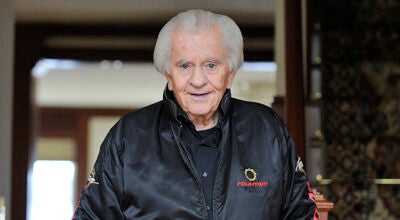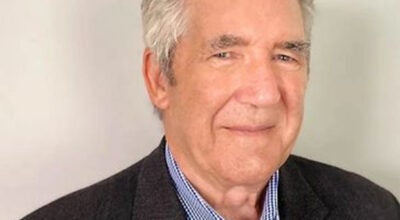New linear accelerator puts cancer center on map
Published 7:45 pm Saturday, February 21, 2015
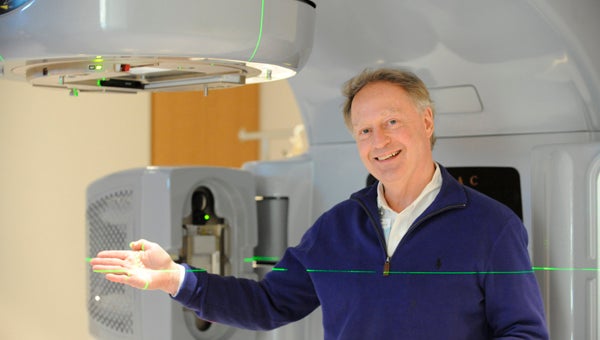
VAIL STEWART RUMLEY | DAILY NEWS
IN THE SIGHTS: Director of Radiation Oncology Dr. Robert McLaurin Jr. displays the laser focusing ability of the new linear accelerator at the Marion L. Shepard Cancer Center. The state of the art technology means Washington’s center “has the best linear accelerator east of 95,” according to McLaurin.
It looks like something out of sci-fi movie, with its two retractable arms and a looming head, both rotating 360 degrees around the person lying prone on the table. But those arms are actually diagnostic; the head delivers beams of radiation; and combined with computer-generated placement via the movable table, the new linear accelerator at Washington’s Marion L. Shepard Cancer Center is now delivering the fastest and most accurate radiation treatments east of I-95.
“Six months ago, it took 30 to 40 minutes for a single treatment. With this machine, it takes two minutes. It delivers radiation much more precisely and rapidly,” said Dr. Robert McLaurin Jr., head of radiation oncology at the cancer center. “Faster is better.”
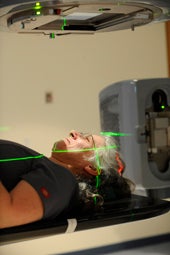
VOLUNTEER: “Comparing an older machine to this machine is like comparing a 1974 VW Beetle to a 2015 Jaguar,” said Radiation Therapist Carolina Moreno, pictured. “You get from Point A to Point B, but with a lot of different bells and whistles.”
Over the weekend, McLaurin explained the workings of the linear accelerator to Vidant-Beaufort Hospital doctors and staff, breaking down the physics of the machinery into layman’s terms during informal tours. Friday, Feb. 27, the general public is invited to the center for the same: the cancer center will host a ribbon cutting and open house from 11:30 a.m. to 1 p.m.
The linear accelerator is a significant acquisition for a center that started its life in 1989 as East Carolina University’s first oncology outreach clinic. Prior to seven years ago, doctors didn’t even have the ability to do radiation treatments, but as the center’s reputation has grown, the number of patients has grown with it — cancer patients are choosing to get their treatment in Washington, rather than traveling to Vidant Medical Center, and even Duke University and University of North Carolina-Chapel Hill hospitals, according to Pam Shadle, manager of public relations for Vidant-Beaufort.
“The center grew to the point where we had to get the new technology,” McLaurin said.
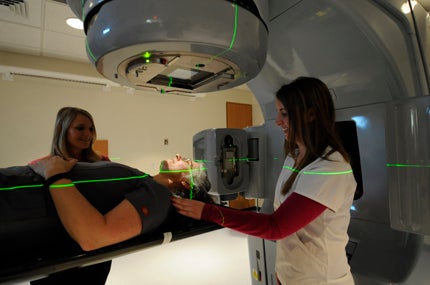
THE GIRLS: Radiation therapists Carolina Morena (on the table), Danielle Midgette (left) and Kristina Howell (right) show visitors what the linear accelerator looks like in action.
One of the most important aspects of the linear accelerator is the time factor, both for the patient and the center’s radiation therapists. Previously, radiation treatments took much longer because therapists would constantly have to physically adjust the patient, and exactitude is required when aiming a beam of radiation into a body. The patient would have to hold positions for a much longer period of time, which also can be grueling.
Now, the linear accelerator’s two arms perform a CT scan, spinning around the patient to map out the internal organs in 3-D, then automatically reference prior scans to make sure the patient, and treatment area, is in the exact same position as before. If it’s off by even a millimeter, it’s the table underneath the patient, and not the patient, that adjusts accordingly.
The distribution of radiation makes the machine even more remarkable: mobile stainless steel plates, called multileaf collimators, shape the radiation beam to fit the treatment area, then continue to change the shape as the machine spins around the patient, delivering radiation from every angle.
“We can change the ray to any shape we want and control the intensity of it across that plane,” McLaurin said. “It’s fascinating because there’s so much physics involved.”
Being able to shape the radiation beam means that healthy tissue surrounding a tumor is protected from damage, which can impact quality of life — for the better — after cancer treatment.
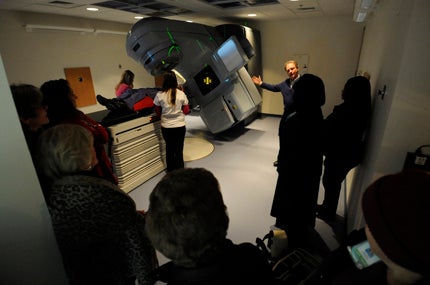
TOUR GUIDE: Dr. Bob McLaurin, director of radiation oncology at the Marion Shepard Cancer Center, describes the workings of the center’s linear accelerator to Vidant-Beaufort Hospital staff.
Technologically, the cancer center’s linear accelerator is cutting edge and will continue to be for several years, which means treatment in Washington rivals that found at any larger hospital in eastern North Carolina, according to McLaurin.
“We get results that are every bit as good as theirs,” McLaurin said. “It doesn’t get any better than this.”
The Marion L. Shepard Cancer Center is located at 1209 Brown Street in Washington. Friday’s open house, from 11:30 a.m. to 1 p.m., is open to the public.



